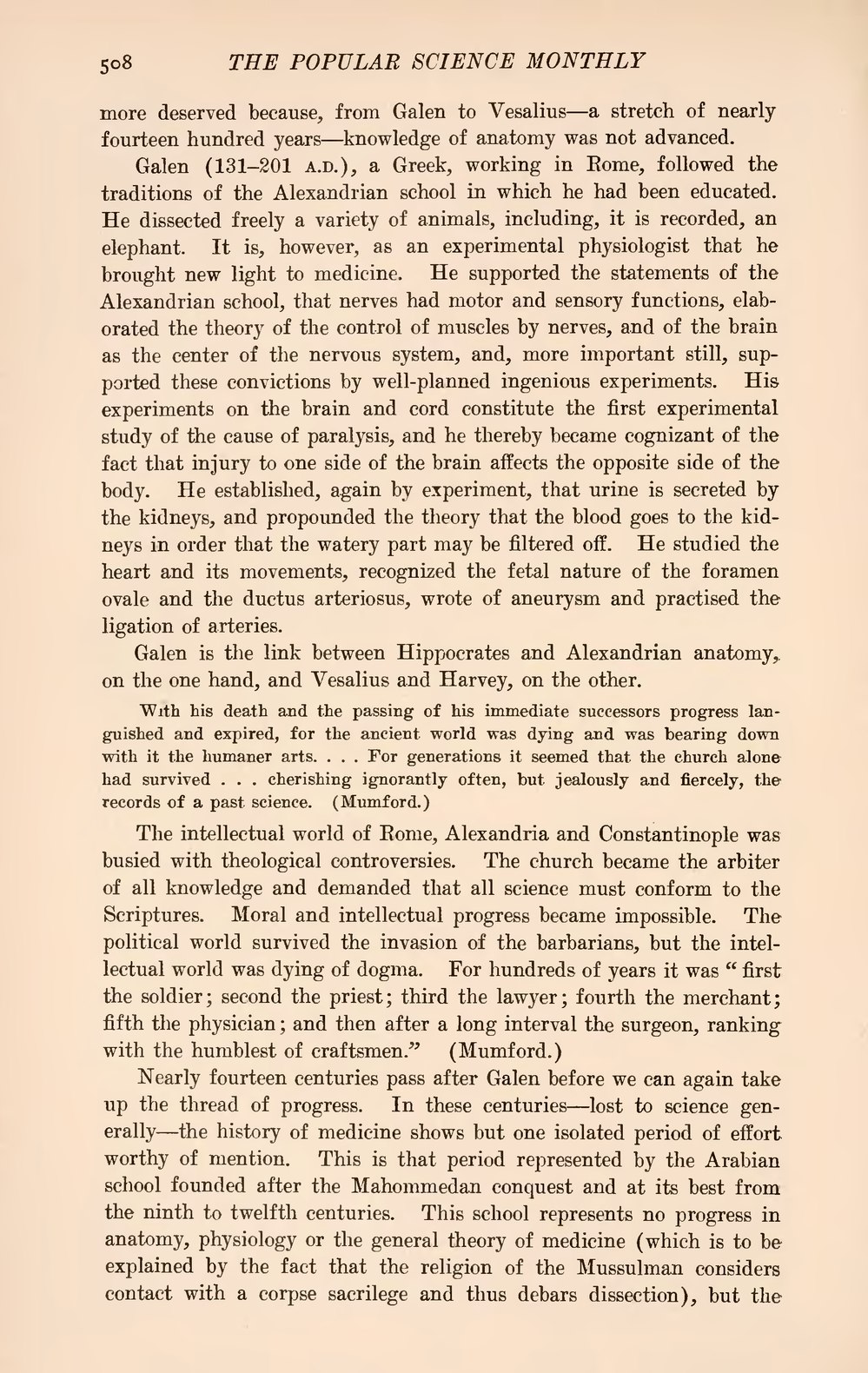more deserved because, from Galen to Vesalius—a stretch of nearly fourteen hundred years—knowledge of anatomy was not advanced.
Galen (131-201 A.D.), a Greek, working in Rome, followed the traditions of the Alexandrian school in which he had been educated. He dissected freely a variety of animals, including, it is recorded, an elephant. It is, however, as an experimental physiologist that he brought new light to medicine. He supported the statements of the Alexandrian school, that nerves had motor and sensory functions, elaborated the theory of the control of muscles by nerves, and of the brain as the center of the nervous system, and, more important still, supported these convictions by well-planned ingenious experiments. His experiments on the brain and cord constitute the first experimental study of the cause of paralysis, and he thereby became cognizant of the fact that injury to one side of the brain affects the opposite side of the body. He established, again by experiment, that urine is secreted by the kidneys, and propounded the theory that the blood goes to the kidneys in order that the watery part may be filtered off. He studied the heart and its movements, recognized the fetal nature of the foramen ovale and the ductus arteriosus, wrote of aneurysm and practised the ligation of arteries.
Galen is the link between Hippocrates and Alexandrian anatomy, on the one hand, and Vesalius and Harvey, on the other.
With his death and the passing of his immediate successors progress languished and expired, for the ancient world was dying and was bearing down with it the humaner arts. . . . For generations it seemed that the church alone had survived. . . cherishing ignorantly often, but jealously and fiercely, the records of a past science. (Mumford.)
The intellectual world of Rome, Alexandria and Constantinople was busied with theological controversies. The church became the arbiter of all knowledge and demanded that all science must conform to the Scriptures. Moral and intellectual progress became impossible. The political world survived the invasion of the barbarians, but the intellectual world was dying of dogma. For hundreds of years it was "first the soldier; second the priest; third the lawyer; fourth the merchant; fifth the physician; and then after a long interval the surgeon, ranking with the humblest of craftsmen." (Mumford.)
Nearly fourteen centuries pass after Galen before we can again take up the thread of progress. In these centuries—lost to science generally—the history of medicine shows but one isolated period of effort worthy of mention. This is that period represented by the Arabian school founded after the Mahommedan conquest and at its best from the ninth to twelfth centuries. This school represents no progress in anatomy, physiology or the general theory of medicine (which is to be explained by the fact that the religion of the Mussulman considers contact with a corpse sacrilege and thus debars dissection), but the
